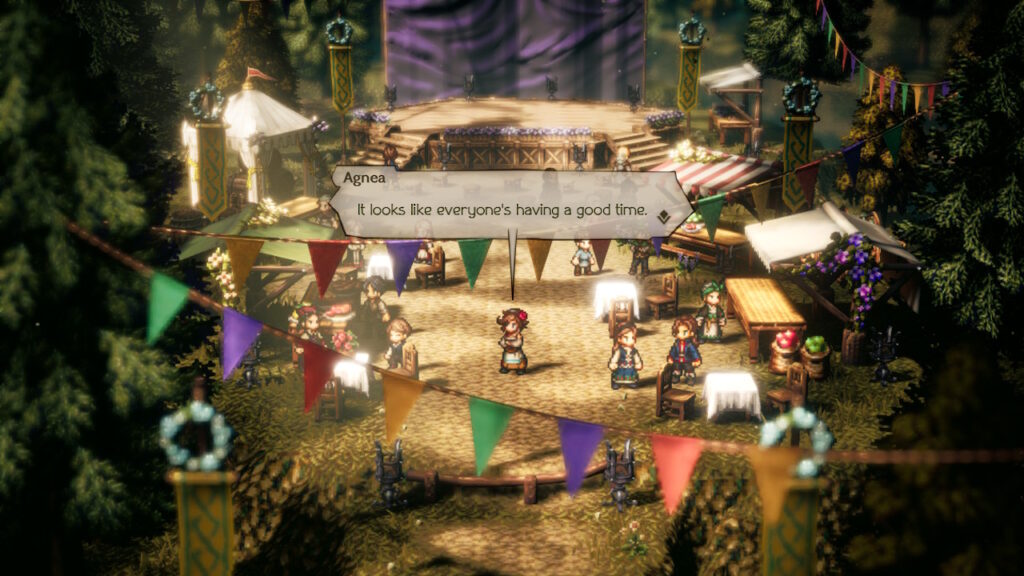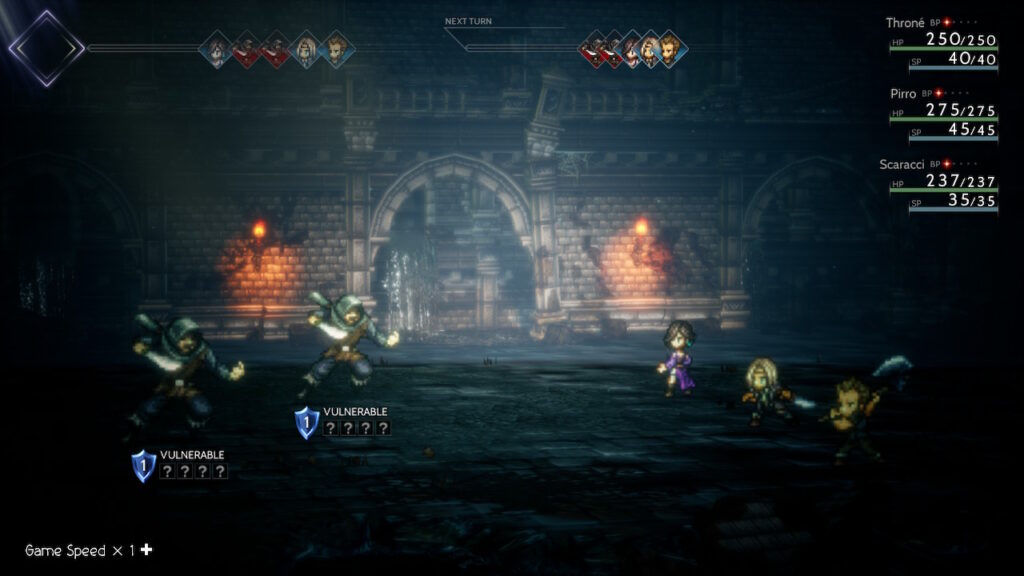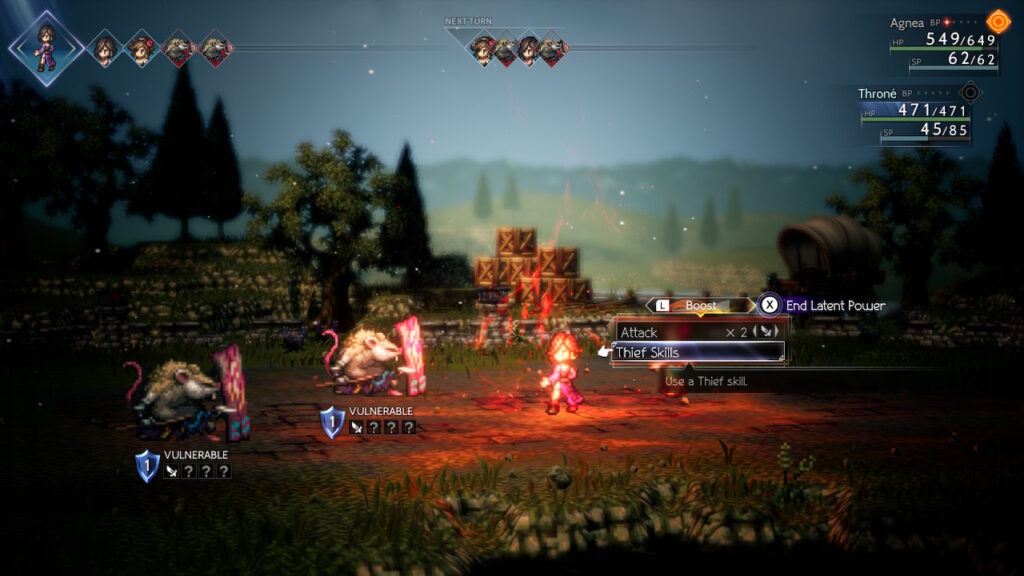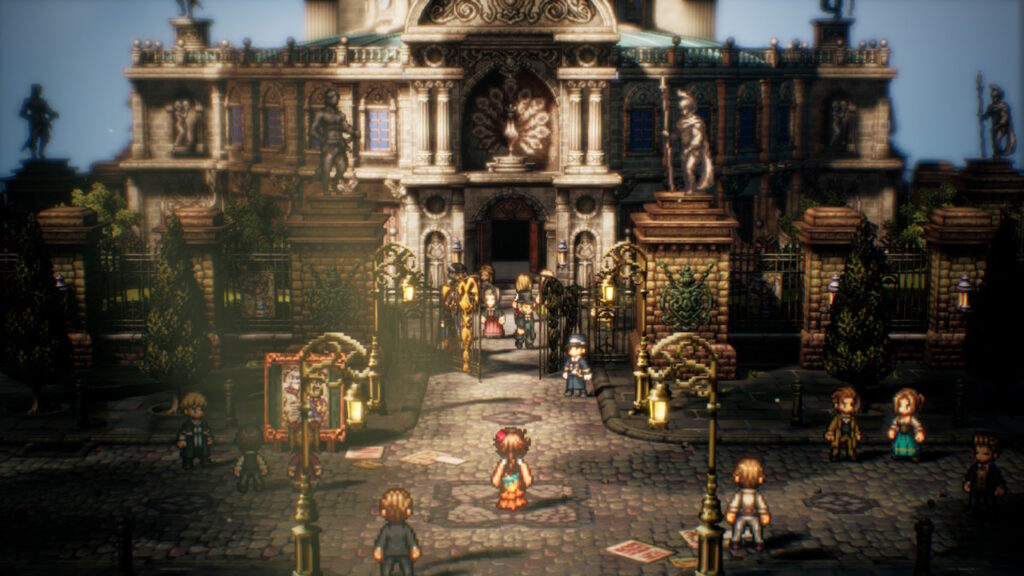Octopath Traveler was a great JRPG, back at the start of the Nintendo Switch. The game later got less exclusive and was enjoyed by a larger fanbase to merit a “real” successor finally (I’m not counting the mobile version). Octopath Traveller II won’t be a Nintendo exclusive anymore and instead be released on all current-gen consoles.
Solistia
Just like Final Fantasy and its many successors, Octopath Traveler II can be seen as a separate story. The same principles used in the original are the only thing that makes this an Octopath Traveler game. The game follows eight different characters than the original and even takes place in a new World called Solistia. Instead of sticking to the medieval background of the original, this time the world feels way more 18th/19th century. Each playable character has their own story starting in a different part of the world. Through one character’s travels, you’ll encounter the other characters. At these points during the game, you can decide to team up and profit from the unique characteristics of each hero. In a world filled with war, and criminal organizations and let us not forget the array of monsters in the wild, you’d be foolish not to team up. Not saying a lone wolf run (with a lot of grinding) couldn’t be attempted.
Different backgrounds
Just like the original, Octopath Traveler II focuses heavily on the story. Each character comes from a totally different background and playing through each character’s “origin chapter” feels totally different. I started out with Agnea who is a dancer wanting to go to the big city to become a star. All very bubbly on the story content with the occasional threats from monsters on a festival ground as the sole “darker” thing to happen. At a certain point, Agnea met Throné at which point the game allows you to play the first chapter of her story before joining forces. It turns out Throné has a way rougher and harsher backstory with death, deceit, and slavery as the main themes. This rich blend of stories intertwining with each other makes Octopath Traveler II an exciting game to get through if you’re into story-driven JRPGs. There is a lot of exploration and a great chunk of turn-based battles to get to in the game but the story is the real star of the game.
The balance between action and story is something I personally struggled with. Although Octopath Traveler II tells a great story, I found it hard to get through every conversation. Each conversation feels long-winded because of the way it is presented (and also because of my own impatience to be honest). I have the feeling the writing in Japanese is great but the translation to English could’ve been made more fluent. A lot of sentences are missing some flow I would assume got lost in translation. In defense of Octopath Traveler II, I feel the same way about most story segments in any Final Fantasy game so this could be just me being picky/ignorant. Having each line on the screen properly delivered by great voice actors makes it obvious how important the story is.
Different paths
Outside battles, each character has their own unique ‘path-actions’. These often involve getting something done from the NPCs in a way fitting for the backstory of the character. For instance, Agnea could allure certain characters to either follow her and help out during battles, or to get some free gifts. Throné on the other hand just stole from characters or ambushed them. These different path actions were all tied to the time of day. Octopath Traveler II introduces a day/night cycle that changes the environment and the potentially available actions. Exploring during the day or the night could yield different outcomes so doing both is always a good idea to maximize what could be obtained in a certain area. Unlike many other games with day/night cycles, you don’t have to wait around in order for nightfall to come or to see the rising sun. Just by clicking a button, you can instantly change the time of day. This feels unlogical story wise but is so darn convenient I won’t complain about it at all.
Battle system
The battle system during the turn-based fights more or less remained the same as in the original game. The standard JRPG battle system more or less with some added thing to add some strategy to the fights. Each enemy has weaknesses that have to be figured out. Once you hit an enemy enough with something they have a weakness, they break leaving them vulnerable to heavy attacks. Each round adds boost points to be used – preferably – on one of those heavy attacks to maximize the damage. Timing your big blow based on the breakpoint of the enemy will greatly improve your chances of getting out victorious. Each character has their own special abilities to use – and more can be learned after gaining enough experience. All in all a quite deep battle system but easy to learn for those worried. They also added Latent powers. These can best be described as the game’s Limit breaks.
2D HD
Octopath Traveler II looks stunning. Although the game uses 2D models in a diorama-like 3D environment, the game has so much detail. The style used gives it a classic feel. The eye for detail on the other hand makes it stand out and a joy to experience. Each area is meticulously worked out and every place feels like a totally different painting. A homage to older games with a touch of finesse is what best describes the style used.
Conclusion
Octopath Traveler II is a traditional JRPG with a focus on the story. The battle system is easy to learn but with enough depth to cater to those looking for some strategic turn-based decisions. The stories intertwine more fluently than in the first game, making this a great JRPG to experience.





